One of the most influential figures of the twentieth century, Richard Joseph Neutra was an Austrian-American architect, helping define modernism in Southern California and around the world.
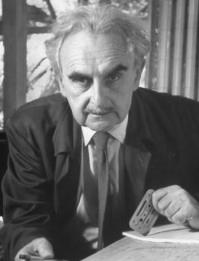
Image source:https://en.wikipedia.org/wiki/Richard_Neutra#/media/File:Richard_Neutra.jpg
About his life
Richard Joseph Neutra was born April 8, 1892, in Vienna, from a wealthy Jewish-Hungarian industrialist family, allowing him to fully pursue his studies, first at the Sophiengymnasium, in Vienna, until 1910, and later under Max Fabiani and Karl Mayreder at the Vienna University of Technology,between 1910 and 1918; notably, he also attended the private architecture school of Adolf Loos, the uber-mordernist. After serving in WWI, Neutra returned to his hometown to take his final examinations, before moving to Switzerland and Germany to begin working, joining the Berliner firm owned by Erich Mendelsohn. After marrying, Neutra would eventually leave Europe in 1923, moving to America, where he’d become a fully naturalized citizen by 1929.
After a brief stint under architectural pioneer Frank Lloyd Wright, he’d accept an invitation from university companion – and, like Wright, an organic architecture exponent – Rudolf Schindler, who offered him a job as landscape architect, beginning with Schindler’s own beach house (1922–1925), expanding to a pergola and wading pool for Wright and Schindler’s complex for Aline Barnsdall on Olive Hill (1925), Hollywood. Schindler and Neutra’s collaborations would not stop here, as they worked together on an entry for the League of Nations Competition of 1926–27, before, in the same year, forming a firm, together with the planner Carol Aronovici, called the Architectural Group for Industry and Commerce (AGIC).
Outside of these activities, Neutra would pursue his own goals, aiming to embody the International Style with his buildings, with twelve among them even earning the designation of Historic Cultural Monuments (HCM), such as the renowned Lovell Health House (1929)
He quickly gained fame throughout California, and his rigorously geometric but airy structures became an immediate association with West Coast residences, receiving offers from the likes of Edgar J. Kaufmann (the same owner of Fallingwater House), Galka Scheyer, and Walter Conrad Arensberg. In the early 1930s, Neutra’s Los Angeles practice trained several young architects who went on to independent success, allowing Neutra to widen his horizons, such as his attempt to transfer to the Soviet Union to help solve the housing problems plaguing the populace.

Image source: https://search.creativecommons.org/photos/ad29aa97-e050-4e44-aa90-0b3381b69586 by IK’s World Trip
In 1932, Neutra’d be part of the MoMA exhibit on modern architecture, together with the likes of Philip Johnson and Henry-Russel Hitchcock. During his later years, Neutra would form a 10-year partnership with Robert E. Alexander, starting 1949, giving him the means to design larger, high-end buildings; one in particular, in 1955, the Karachi Embassy, commissioned by the USA Department of State, the first of many Neutra-designed embassies all around the world. In 1965, Neutra’d form a new partnership with his son Dion, designing European Villas for the next decade.
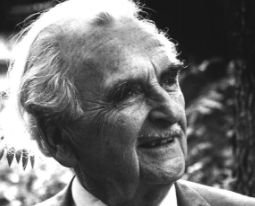
mage source: https://www.findagrave.com/memorial/94661087/richard-josef-neutra
He died April 16, 1970; to this day, his legacy stems from his role as an Austrian-born, American architect introducing the International Style into American architecture, thus changing its landscape – both metaphorical and literal – forever. His legacy is one of care and attention to his clients’ needs, regardless of the project’s size, refusing, unlike many of his peers, to impose his own artistic vision, blending art, comfort and landscape in his domestic architecture, more often than not with his trademark sense of humor.
He’d stress a “ready-for-anything” plan – pointing at an open, multifunctional plan for living spaces that as the most flexible, adaptable and easily modified solution, for any type of lifestyle or event.
What are his most famous works?
One of Neutra’s most important early works was the Lovell House, Los Angeles (1927–29), a home made with glass expanses and cable-suspended balconies, stylistically similar to the works of Le Corbusier and Ludwig Mies van der Rohe in Europe. Throughout the 1930s, he designed houses in the International Style, bridging the stylistic gap between America and the old continent.
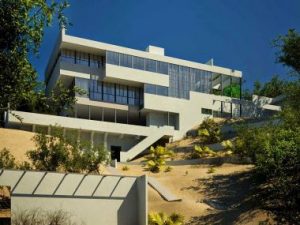
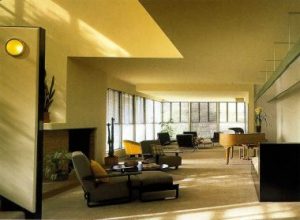
Shortly after World War II, Neutra created his most memorable works: the Kaufmann Desert House, Palm Springs, Calif. (1946–47), and the Tremaine House, Santa Barbara, Calif. (1947–48). Elegant and precise, these are considered exceptional examples of the International Style, adapted to the needs of a new market.
Carefully integrated in the landscape, Neutra’s houses often sported patios and porches, making the outdoors seem part of the house itself. He believed that architecture should be a means of bringing man back into an harmony with nature, being particularly concerned himself that his houses reflect the way of life of the owner.
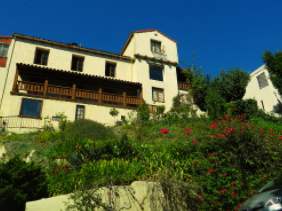
Image source: https://search.creativecommons.org/photos/11e18085-9a5a-4e43-b729-facd63982476 by Ken Lund
What are Neutra’s style main features ?
He was famous for the attention he gave to defining the real needs of his clients, regardless of the size of the project, in contrast to other architects eager to impose their artistic vision on a client. Neutra sometimes used detailed questionnaires to discover his client’s needs, much to their surprise. His domestic architecture was a blend of art, landscape, and practical comfort.
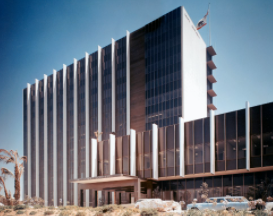
Images source: https://search.creativecommons.org/photos/a11e7582-f233-4dcc-a9a8-b5476fd9de82 by Orange County Archives
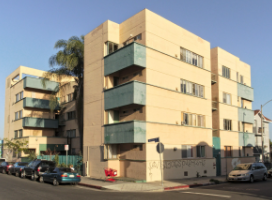
Images source: https://search.creativecommons.org/photos/8a29675d-4ba4-400f-a1c5-65e9aec477c7
Neutra’s early watercolors and drawings, most of them of places he traveled (particularly his trips to the Balkans in WWI) and portrait sketches, showed influence from artists such as Gustav Klimt, Egon Schiele etc. Neutra’s sister Josefine, who could draw, is cited as developing Neutra’s inclination towards drawing.
Info sources:
https://en.wikipedia.org/wiki/Richard_Neutra
